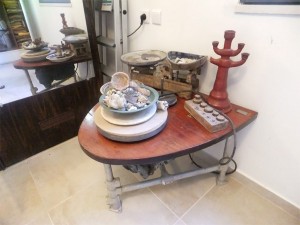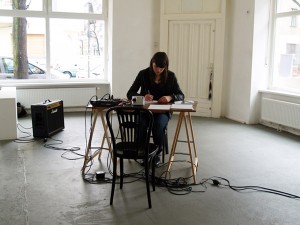
The authors signing their book
© Jewish Museum Berlin
Alice Bota, Khuê Pham and Özlem Topçu recently presented their book “We, the New Germans: Who We Are and What We Want” at the Academy of the Jewish Museum Berlin. The three women, all journalists for the newspaper Die Zeit, discussed with one hundred guests what it means to be German in the 21st century. Before the event we asked the three authors a number of questions, including: “What inspired you to write this book?” They responded:
“We three are colleagues. We are political editors. And we are children of foreigners. But we find that despite being quite different, we share an outrage at those who would like to tell us who we are. By writing this book, we wanted to voice our concern, claim our identities and share our families’ stories. We wanted to demonstrate that immigrants’ stories are not necessarily about failure, and that broken and mixed family histories can in fact lead to personal success.” → continue reading
An Appeal for Recognition and Dignity
“We used to throw stones at her – we thought she was a witch.” With these words, a former resident of Rishon LeZion ruefully told me of her childhood encounters with the sculptor and doll maker, Edith Samuel. Edith wore her long, dark, European skirts under the searing Middle Eastern sun and suffered from a physical deformity. The daughter of a liberal German rabbi, Edith and her sister Eva were both artists who left their home city of Essen in the 1930s and immigrated to Palestine.

The pottery wheel belonging to Paula Ahronson, Eva Samuel’s business partner, is preserved in private hands and untouched since her death in 1998
© Jewish Museum Berlin, photo: Michal Friedlander
The Samuel sisters worked long hours, struggled to earn a living and did not gain the recognition that they deserved, during their lifetimes. The exhibition “Tonalities” at the Jewish Museum Berlin aims to bring forgotten women artists back into the public arena. It presents Eva Samuel’s works and that of other women ceramicists who were forced to leave Germany after 1933.
My search for transplanted German, Jewish women in the applied arts began many years prior to my encounter with the Samuel sisters. It was Emmy Roth who first captured my attention. Born in 1885, Roth was an exceptionally talented and internationally successful silversmith, who worked in Berlin. She immigrated to Palestine and fell into obscurity, ultimately taking her own life in 1942. Her male refugee colleagues, Ludwig Wolpert and David Gumbel, were appointed to teach metalwork at the Jerusalem New Bezalel School of Art in the late 1930s. They are feted in Israel today, whereas Roth is still completely unknown there. → continue reading
An Interview with Alex Martinis Roe

Alex Martinis Roe, Encounters: Conversation in Practice, performance still, 2010.
Image courtesy of the artist.
To obtain a letter from a vending machine – even from an art vending machine – is rather unusual. In this interview, Australian artist Alex Martinis Roe explains what motivated her to create the artwork “A Letter to Deutsche Post.”
Christiane Bauer: Alex, you drafted a letter to Deutsche Post, asking the officers to reissue stamps depicting Rahel Varnhagen and Hannah Arendt. When our visitors purchase the letter, are they supposed to send it to Deutsche Post?
Alex Martinis Roe: I don’t expect visitors to send the letter to Deutsche Post, because I didn’t ask them to. They can do whatever they like with it. If they send it off, I’m happy. If they keep it, I’m also happy. (laughs) What I hope, is that they read the letter and become interested in the story.
Why did you choose to make a letter for the art vending machine? → continue reading


